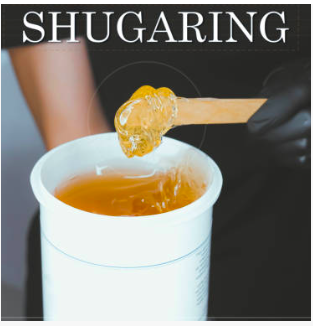Master the art of sugaring, a specialized technique that sets you apart in the world of hair removal services.
Experience a gentle and effective hair removal method that leaves your clients with smooth, flawless skin.
Utilize natural ingredients for a safer and more sustainable hair removal solution.
About the Sugaring Hair Removal Guide
Our comprehensive guide dives deep into the world of sugaring hair removal, covering everything from technique demonstrations to client care tips. Whether you're a licensed esthetician or cosmetologist looking to expand your skill set, this resource is your gateway to success in the niche of sugaring services.
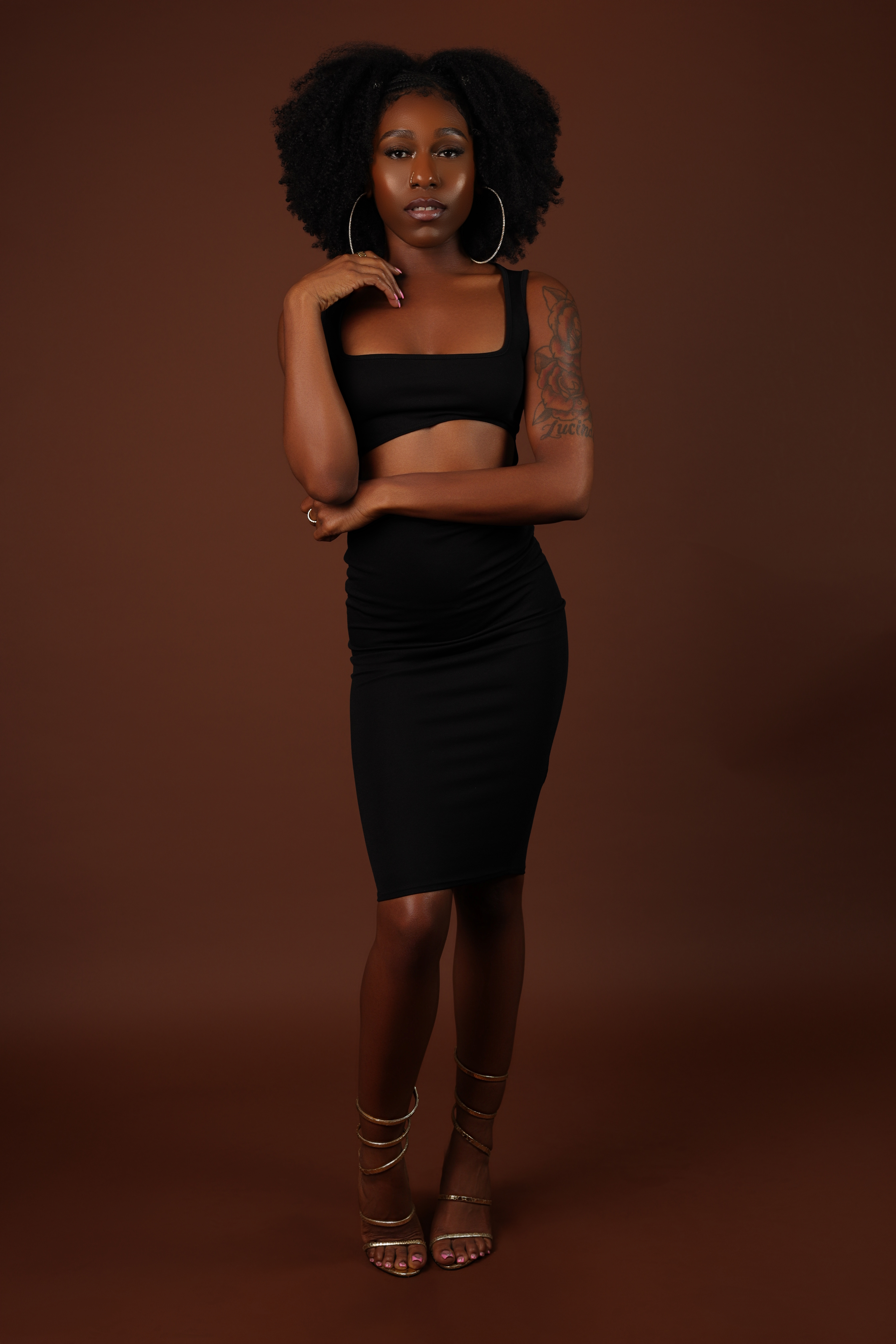
Meet Your Expert Guide
Hi, I'm Ashayla Porter, a licensed esthetician, entrepreneur and a seasoned professional in the field of esthetics with a passion for sharing knowledge. I've curated this guide to help you excel in the art of sugaring hair removal, providing you with the insights and expertise you need to thrive in this specialized area.
🌿 History of Sugaring
Discover how our guide is transforming careers and empowering estheticians like you to succeed in the world of sugaring hair removal.
Sugaring has stood the test of time — evolving from an ancient royal beauty ritual to a modern-day professional service known for its purity, gentleness, and effectiveness.
Washington, DC
💫 Modern Revival In the late 20th century, sugaring resurfaced as a natural, eco-friendly, and skin-safe alternative to waxing. Today, it’s valued for being: 100% natural (just sugar, lemon, and water). Less painful and less irritating to the skin. Environmentally friendly and sanitary (no strips, no sticks). Modern sugaring has evolved with professional techniques, varying paste consistencies, and specialized training programs.
101
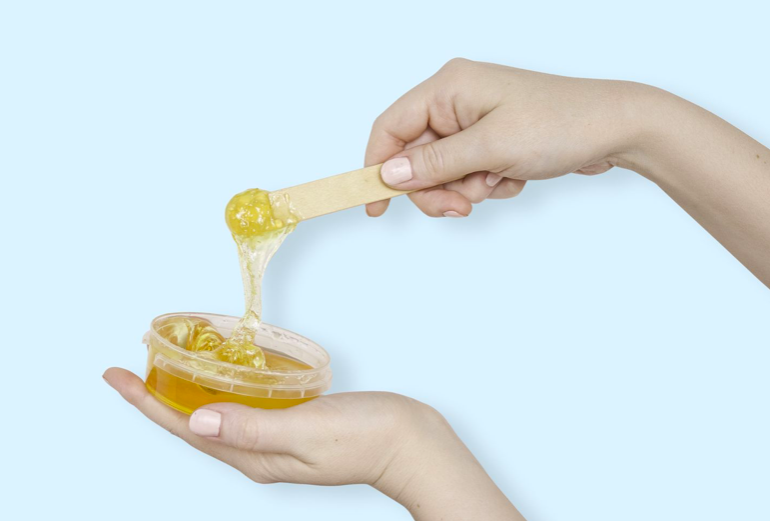
🌍 Ancient Origins Sugaring is one of the oldest known hair removal methods, dating back over 3,000 years. It originated in Ancient Egypt, Persia (modern-day Iran), and Greece. Egyptians considered smooth, hair-free skin a symbol of cleanliness, beauty, and social status. 👑 Ancient Egyptian Practices Queen Cleopatra and other royals were believed to use natural sugar pastes for hair removal. The early paste was made with sugar, water, and lemon juice — all-natural, edible ingredients. The process was gentle, hygienic, and suitable for the hot desert climate (sugar doesn’t spoil easily).
101
🕌 Persian & Middle Eastern Traditions Sugaring became a traditional beauty ritual in Persian culture, known as "moum" or "sukkar". It was a common pre-wedding and hygiene practice among women. The method spread across the Middle East, North Africa, and Mediterranean regions through trade and travel. 🌸 European Influence During the 18th and 19th centuries, European travelers and explorers brought sugaring knowledge from the Middle East to the West. However, as waxing products became commercialized in the 20th century, sugaring’s popularity declined temporarily.
101

✨ Benefits of Sugaring
🌿 1. 100% Natural Ingredients Made from sugar, lemon, and water — no chemicals, resins, or preservatives. Ideal for sensitive skin and clients seeking eco-friendly or vegan beauty options.

Highlight #2
💆♀️ 2. Gentle on the Skin Sugar paste adheres only to dead skin cells and hair, not live skin. Reduces risk of irritation, redness, and lifting. Suitable for clients with eczema, psoriasis, or sensitive areas.

Highlight #3
🔥 3. Less Painful Than Waxing The paste is applied at body temperature, so there’s no risk of burns. Because it doesn’t stick to live skin, it pulls less, making it more comfortable.
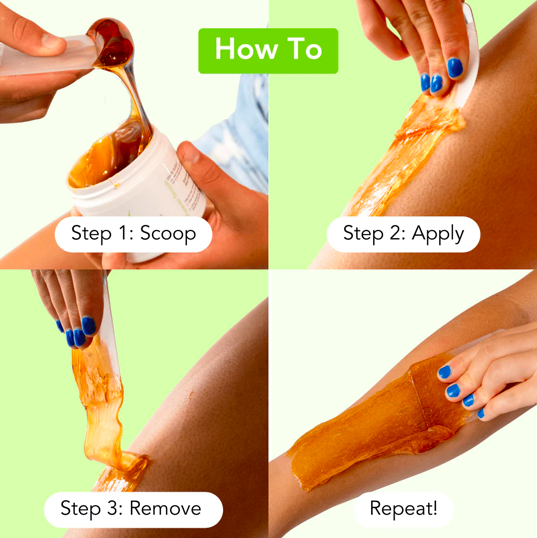
🛡️ Sanitation & Safety in Sugaring
Highlight #1
🧤 1. Personal Hygiene Wash hands before and after every client. Always wear disposable gloves during the service — never double dip into your sugar jar. Keep nails short, clean, and free of debris to avoid scratching the client. Wear a clean uniform or apron each day; tie back long hair.
Highlight #2
🪞 2. Clean Workstation Disinfect all surfaces before and after each client. Use EPA-registered disinfectants on tables, trays, and tools. Keep workstation organized and clutter-free. Use clean linens or disposable table covers for each client.
Highlight #3
🍯 3. Product Sanitation Always use a clean glove or spatula to remove sugar from the container. Do not return used paste to the jar. Discard any leftover paste used on a client. Keep product containers closed when not in use to avoid contamination.
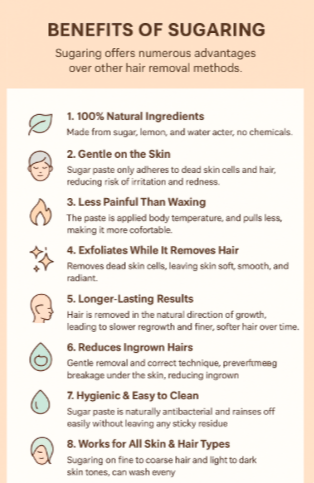
🧼 Hygiene Protocols for Sugaring Professionals
🧼 Hygienic & Easy to Clean
Sugar paste is naturally antibacterial (bacteria can’t grow in sugar). It’s water-soluble, so it rinses off easily — no sticky residue.
🧴 Tool & Equipment Disinfection
Clean all reusable tools (tweezers, scissors, etc.) with soap and water, then disinfect or sterilize. Follow your state board’s disinfection protocols. Store sanitized tools in covered, labeled containers.
🚫 5. Client Protection
Review the client’s health history and contraindications before the service. Do not perform sugaring on broken, sunburned, or irritated skin. Use disposable applicators, gloves, and cotton to avoid cross-contamination. Apply pre-cleansing solution before and soothing product after treatment.
⚖️ Laws & Licensing (Varies by Region)
🧴 General Licensing Requirements for Estheticians Virginia Training: Complete a 600-hour esthetician program at a licensed Virginia school or a 2,000-hour registered apprenticeship. Exams: Pass both written and practical exams administered by the Virginia Department of Professional and Occupational Regulation (DPOR). License: Apply for licensure through DPOR. Wax Technician Option: Alternatively, you can obtain a 115-hour Wax Technician license, which permits you to perform sugaring and other hair removal services. Maryland Training: Graduate from a 600-hour esthetician program at a licensed Maryland school or complete a 6-month apprenticeship under a licensed esthetician. Exams: Pass the written and practical exams administered by PSI. License: Apply for licensure through the Maryland Board of Cosmetologists. Scope of Practice: Maryland estheticians have a broad scope of practice, including sugaring, waxing, facials, and makeup application. However, some advanced procedures like microneedling or chemical peels may require additional certifications or supervision. Washington, D.C. Training: Complete a 600-hour esthetician program at a licensed D.C. school. Exams: Pass the written and practical exams administered by Pearson VUE. License: Apply for licensure through the D.C. Department of Health. Scope of Practice: D.C. estheticians are permitted to perform sugaring and other esthetic services. 💡 Sugaring as a Service Sugaring is considered a form of hair removal and falls under the esthetician's scope of practice in all three jurisdictions. To legally offer sugaring services, you must hold a valid esthetician license or a specific waxing license, depending on the state.

✋ Preparation
1.Sanitize hands and workspace. 2.Cleanse skin with a gentle cleanser to remove oils, lotions, or dirt. 3.Lightly dust area with cornstarch or powder to absorb excess moisture. 4.Trim hair if needed – ¼ to ½ inch is ideal. 5.Check for contraindications – active breakouts, sunburn, or skin infections.

🖐 Technique & Application of Sugaring Paste
There are two main techniques: 1. Hand Technique ("Flick" Method) Grab a small amount of paste into a ball using your 4 fingertips 2. Flatten and spread against hair growth in a thin layer (~1–2 mm). 3. Grip the edge of the paste and pull in the direction of hair growth. 4. Repeat, re-rolling the paste as needed. 5. Apply Pressure to the area for client comfort after each strip 6. Apply soothing lotion or aloe vera gel to calm redness. Pros: Works well for small or sensitive areas (face, underarms, bikini) Minimal waste

Aftercare 🌿 (Client Instructions)
Immediate Aftercare (0–24 hours) 1. Inform client to Avoid hot baths, saunas, sexual activities, or intense workouts to prevent irritation. *This does NOT mean client cannot shower. Showering is still highly encouraged. 2. No direct sun or tanning beds—skin is more sensitive. Short-Term Aftercare (1–3 days) 3. Wear loose clothing to prevent friction. 4. Avoid heavy sweating or swimming in chlorinated water. 5. Gentle cleansing only—use mild, fragrance-free soap. Avoid harsh scrubs or exfoliants immediately. Long-Term Aftercare 6. Exfoliate lightly 2–3 days post-sugaring, then 2-3 times weekly to prevent ingrown hairs. 7. Moisturize daily to maintain soft, healthy skin. 8. Schedule repeat sessions every 3–6 weeks depending on hair growth.

💡 Tips for Best Results
1. Always pull in the direction of hair growth (less pain, fewer breaks). 2. Keep paste thick enough to hold shape but thin enough to spread easily. 3. Test on a small area first if unsure of skin sensitivity. 4. Keep pressure even during pulling to prevent bruising. 5. Regular maintenance every 3–6 weeks ensures smooth skin. 💡 Extra Tips for Beginners Always practice on smaller areas before full-body sugaring. Observe hair direction closely; hair can grow in multiple directions in some areas. Keep consistent tension on the skin during removal. Maintain clean and sanitary tools at all times.

⚠️ Common Mistakes & 🛠️ How to Correct Them
❌ 1. Applying Paste in the Wrong Direction Mistake: Pulling the paste against hair growth (like waxing). Why It’s Wrong: Causes more pain, breaks hair, and increases the risk of ingrown hairs. Correction: Always apply and remove in the direction of hair growth. Observe hair pattern carefully before starting. ❌ 2. Paste Too Hot or Too Cold Mistake: Using paste that’s too hot (burns) or too cold (won’t spread properly). Correction: Test paste on your wrist first. Ideal consistency is soft, pliable, and body-temperature warm. Adjust with brief reheating or cooling as needed. ❌ 3. Applying Too Thick or Too Thin Mistake: Too thick: Difficult to remove, sticky residue left behind. Too thin: Breaks during removal, hair not pulled out. Correction: Aim for a thin, even layer (~1–2 mm). Practice rolling and spreading balls of paste to get consistency right. ❌ 4. Not Prepping the Skin Properly Mistake: Skipping cleansing, exfoliation, or drying. Why It’s Wrong: Oil, sweat, or lotion can prevent paste from gripping hair. Correction: Clean skin, lightly dust with powder if needed, and remove any oils or moisturizers. ❌ 5. Using Too Much Paste Mistake: Applying large blobs that are hard to remove. Correction: Work in small sections, re-roll paste as needed. Small amounts allow better control and less waste. ❌ 6. Pulling Incorrectly Mistake: Pulling paste slowly, at the wrong angle, or back toward yourself. Correction: Use a quick, flicking motion in the direction of hair growth. Keep skin taut to minimize pain and prevent bruising. ❌ 7. Reusing Dirty Paste Mistake: Reusing paste that has touched the skin multiple times without cleaning. Correction: Use fresh paste or re-roll in a clean manner. Discard contaminated portions to prevent infections. ❌ 8. Not Checking for Contraindications Mistake: Sugaring over sunburned, irritated, or acne-prone skin. Correction: Perform a pre-treatment consultation. Skip areas with infections, open wounds, or severe irritation. ❌ 9. Neglecting Aftercare Mistake: No soothing or post-care instructions given to clients. Correction: Apply aloe vera or calming lotion, avoid sun exposure, saunas, or hot baths for 24 hours. Advise gentle exfoliation after 2–3 days.

🧽 Clean-Up & Aftercare
1. Removing Residual Paste Use warm water and a gentle cloth to remove leftover paste. 2. Avoid oils immediately after sugaring if the skin is sensitive; some oils may trap heat or irritate. For stubborn areas, a damp muslin or cotton cloth can help wipe off excess. 3. Disinfecting Tools & Workspace 4. Wash hands thoroughly before and after service. 5. Clean and sanitize spatulas, bowls, and containers. 6. Spray surfaces and chairs with an EPA-approved disinfectant. 7. Dispose of single-use items (fabric strips, gloves) properly. 8. Personal Hygiene Encourage clients to wear loose clothing after treatment to avoid friction. 9. Make sure all waste (used strips, paper towels) is discarded.
Consistency Types: Soft (cream-like) – for fine hair or sensitive areas like legs, arms and face
Medium (taffy-like) – most commonly used for Brazilians and underarms. Suitable for most hair types ~Temperature:~ Ideally body temperature (~90–100°F / 32–37°C). Too hot can burn; too cold makes it difficult to spread.
Hard (thicker, moldable) – for coarse hair or larger areas Can also be used to get un-stuck
Consultation 📝 (Before Treatment)
💡 Purpose: Make sure client is safe and a good candidate. Ask about: 🧴 Skin condition → rashes, cuts, burns, acne? 💊 Medications → Retin-A, Accutane (6 months), antibiotics, steroids, blood thinners. ☀️ Recent treatments → chemical peels, laser, tanning, microdermabrasion. ❤️ Medical history → diabetes, pregnancy, varicose veins. ✂️ Hair removal history → shaving, waxing, threading, sugaring. 📌 Always use a consultation/consent form!
Contraindications 🚫 (When NOT to Sugar)
❌ Absolute – Do Not Perform: ☀️ Sunburn, rash, open wounds. 🧪 Recent peel/laser (7–14 days). 🦠 Contagious skin issues (herpes, fungus, warts). 💊 Accutane use in last 6 months. 🧴 Severe eczema, psoriasis, dermatitis. 🕊️ Fragile or very thin skin. ⚠️ Relative – Use Caution: 🤰 Pregnancy (extra sensitive). 🍭 Diabetes (slower healing). 🌸 Mild rosacea or sensitive skin.
Aftercare 🌿 (Client Instructions)
Describe a key feature that sets you apart, solves a problem, or adds value to your users.
Retention 📅 (When to Rebook)
Schedule repeat sessions every 3–6 weeks depending on hair growth.
😌 Master Your Craft
Practice makes perfect. Maintain confidence and steady hands; rushing increases pain and mistakes.
Ready to Elevate Your Career?
Take the leap and unlock the potential of sugaring hair removal in your esthetics journey. Fill out the form below to get your free download now!
$300.00
